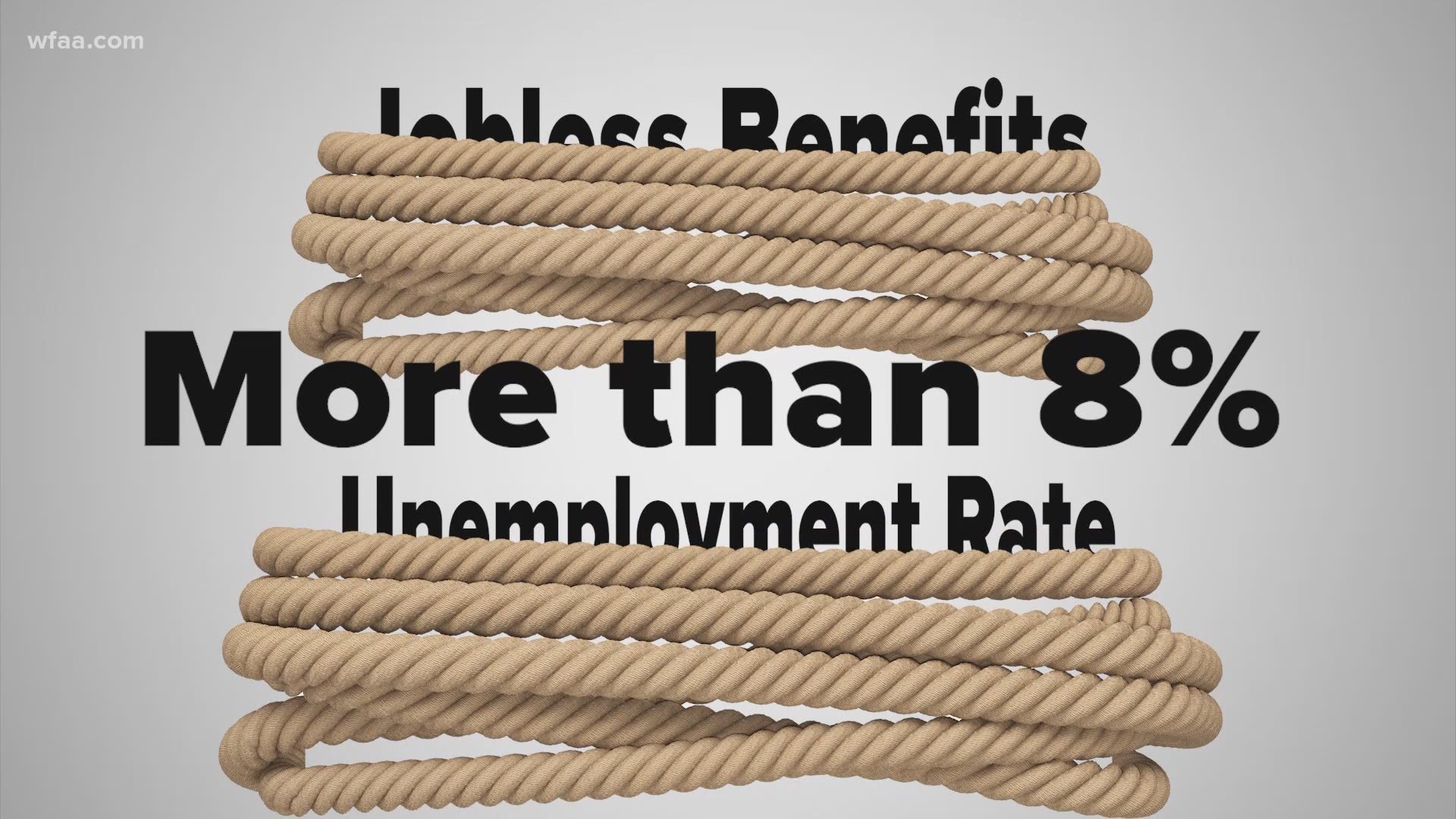Many Texas businesses this week went from 50% to 75% capacity, as Gov. Greg Abbott continues to reopen the economy in steps. But so far, the latest expansion isn't significantly driving down unemployment claims, which dipped just slightly from 49,386 a week ago to 47,497 now.
RELATED: What's the unemployment rate in Dallas? Researchers say it depends on the wage bracket you're in.
The latest claims were compiled just before the economy reopened to a greater degree, so a lot of attention will be on next week’s unemployment numbers to see if they make more of a move in the right direction.
A chunk of unemployment benefits in Texas is going away
Some jobless benefits in Texas are directly tied to the unemployment rate. They're called High Unemployment Period (HUP) payments. When more than 8% of Texans are out of work, which happened recently, the state adds seven more weeks of benefits.
Those additional weeks of unemployment, combined with extensions provided for by the federal government early in the pandemic, left Texans on regular unemployment with a total of 59 weeks of state benefits. People who are normally ineligible for unemployment (so-called 1099 workers including self-employed, gig workers and contract workers who are now able to receive Pandemic Unemployment Assistance [PUA] benefits), were set to get a total of 46 weeks of state unemployment benefits when the HUP weeks were added. No one was actually receiving HUP benefits when that assistance was taken away.
But now that the unemployment rate has gone below that 8% trigger point, those seven extra weeks of payments have been removed. Texans on regular unemployment will now be eligible for a total of 52 weeks of benefits. Texans receiving unemployment through PUA benefits will now be eligible for a total of 39 weeks of benefits.
A pandemic dilemma: How to talk to your boss about anxiety or depression
A Wall Street Journal article asks: Is It OK to Reveal Your Anxiety or Depression to Your Boss?
That’s a good question, because the WSJ reports nearly 41% of adults have had symptoms of anxiety or depression during the pandemic, and that is far more than usual. One takeaway in the piece is a portion where they ask how you go about reaching out to discuss these issues.
An expert in the article suggests people consider whether their manager has talked about their own mental health or has ever been vulnerable about other aspects of life, because that could be a sign of empathy. If the answer is no, the expert quoted in the WSJ piece suggests that it might be best instead to start with human resources.
The expert, with Mind Share Partners, also suggests that employees reporting mental health issues to an employer go in with solutions in mind. But how much do you share? The report advises "When in doubt, keep it vague—but don’t lie."
More about mental health in the workplace can be found in this Harvard Business Review article.

